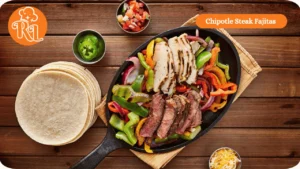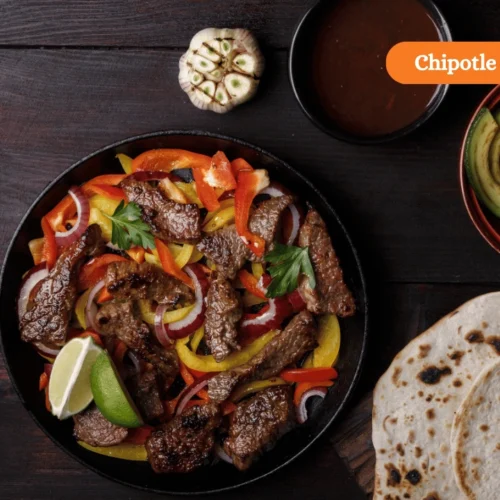Chipotle steak fajitas are a vibrant, mouthwatering dish that brings the essence of Mexican cuisine to your table. Known for their bold flavors and colorful presentation, fajitas are perfect for a variety of occasions, from casual family dinners to lively gatherings with friends. With tender strips of marinated steak, sautéed bell peppers, and onions served in warm tortillas, this dish is a feast for the senses. This article will explore the origins of fajitas, the health benefits of the ingredients, the art of marinating and grilling steak, as well as tips for creating a fajita experience that will impress anyone who takes a bite.
The Origin of Chipotle Steak Fajitas
Fajitas originated in the Tex-Mex region of the United States, specifically in Texas, during the 1930s. The word “fajita” comes from the Spanish word “faja,” meaning “belt” or “strip.” This name refers to the cut of meat used, primarily skirt steak, which is long and thin. Originally, fajitas were made with inexpensive cuts of meat that were grilled and served with tortillas, making them a popular dish among Mexican ranch workers.
Over the years, fajitas have evolved and gained popularity, leading to various adaptations that feature different types of proteins, including chicken, shrimp, and even vegetarian options. Today, chipotle steak fajitas stand out for their rich flavor, which comes from the combination of marinated steak and the smokiness of chipotle peppers.
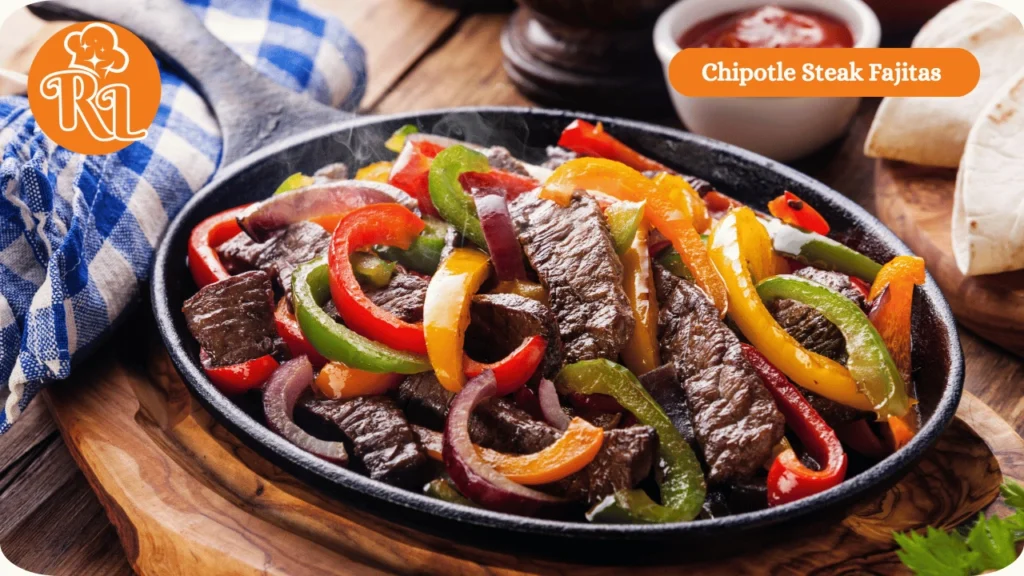
Health Benefits of Fajitas
Chipotle steak fajitas are not just delicious; they can also be a nutritious meal option. When prepared with fresh ingredients and served with a variety of toppings, this dish offers several health benefits:
- Lean Protein: Steak is an excellent source of protein, which is essential for muscle repair and growth. Choosing lean cuts of beef can provide your body with the necessary nutrients without excessive fat.
- Vitamins and Minerals: The colorful bell peppers and onions that accompany the steak add a wealth of vitamins and minerals to the dish. Bell peppers are particularly high in vitamin C, which supports immune health and skin vitality.
- Healthy Fats: When topped with ingredients like avocado or guacamole, fajitas can offer healthy monounsaturated fats that are beneficial for heart health.
- Fiber: Including whole-grain tortillas or serving fajitas with beans can increase the fiber content, promoting digestive health and helping you feel full longer.
- Customization: Fajitas are incredibly versatile and can be tailored to meet various dietary preferences. You can easily add more vegetables or substitute the meat for plant-based options without sacrificing flavor.
The Art of Marinating Steak
Marinating steak is a crucial step in achieving tender and flavorful fajitas. The marinade not only infuses the meat with flavor but also helps to break down tough fibers, making the steak more tender. Here are some key tips for marinating steak effectively:
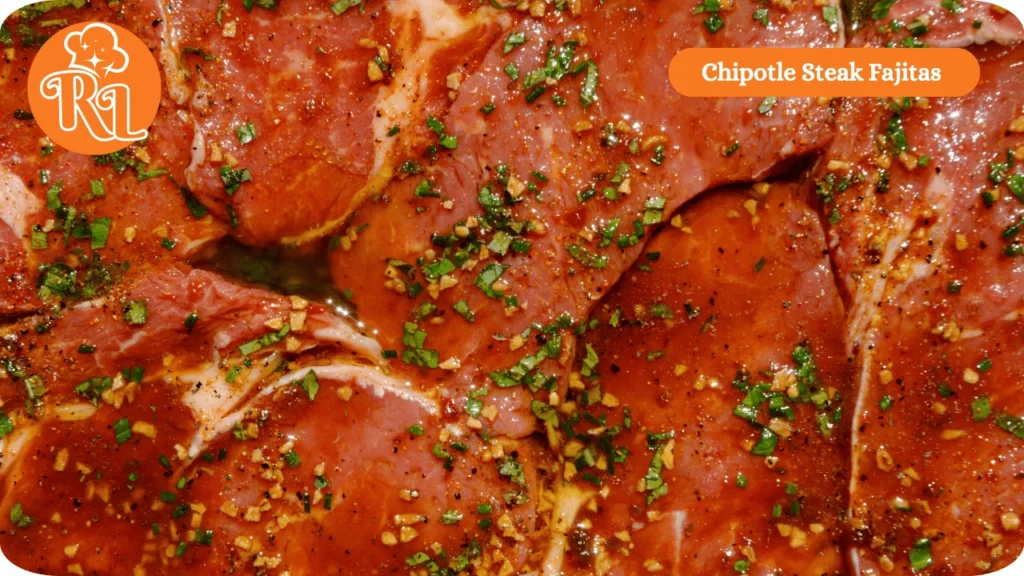
- Choosing the Right Cut: While skirt steak is traditionally used for fajitas, you can also use flank steak or sirloin. Each cut has its unique texture and flavor, so feel free to experiment.
- Creating a Flavorful Marinade: A classic marinade for chipotle steak fajitas often includes ingredients like lime juice, garlic, cumin, and of course, chipotle peppers in adobo sauce. The acidity of lime juice helps to tenderize the meat while adding a zesty flavor.
- Time is Key: Marinating the steak for at least 30 minutes is essential, but for optimal results, allow it to marinate for several hours or even overnight. This gives the flavors time to penetrate the meat fully.
- Proper Storage: Always marinate steak in the refrigerator to prevent bacterial growth. Use a resealable plastic bag or a covered dish to keep the meat submerged in the marinade.
Grilling the Steak
Grilling is a popular cooking method for steak fajitas, as it enhances the meat’s natural flavors while providing a delightful char. Here are some tips for grilling the perfect steak:
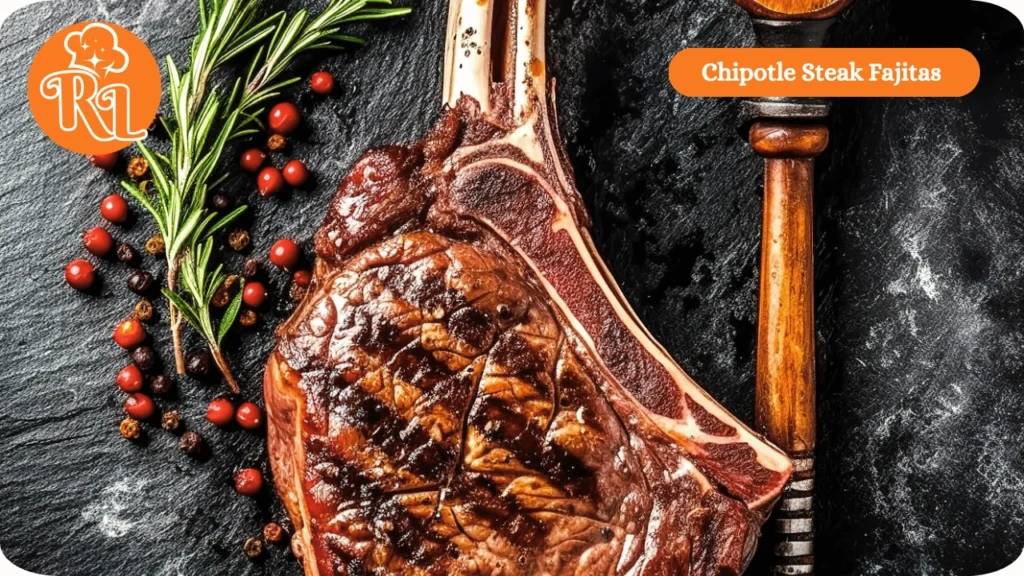
- Preheat the Grill: Ensure your grill is preheated to high heat before placing the steak on it. This helps to achieve a nice sear and lock in the juices.
- Oil the Grates: Lightly oiling the grill grates can prevent sticking and create beautiful grill marks on the steak.
- Avoid Overcooking: Cooking time will depend on the thickness of the steak and your preferred level of doneness. Use a meat thermometer to check for the desired internal temperature—around 130°F for medium-rare.
- Let it Rest: Once grilled, allow the steak to rest for a few minutes before slicing. This helps the juices redistribute, ensuring a moist and flavorful bite.
Sautéing the Vegetables
While the steak is grilling, it’s time to prepare the vegetables. Sautéing bell peppers and onions brings out their natural sweetness and adds depth to the fajitas. Here’s how to do it:
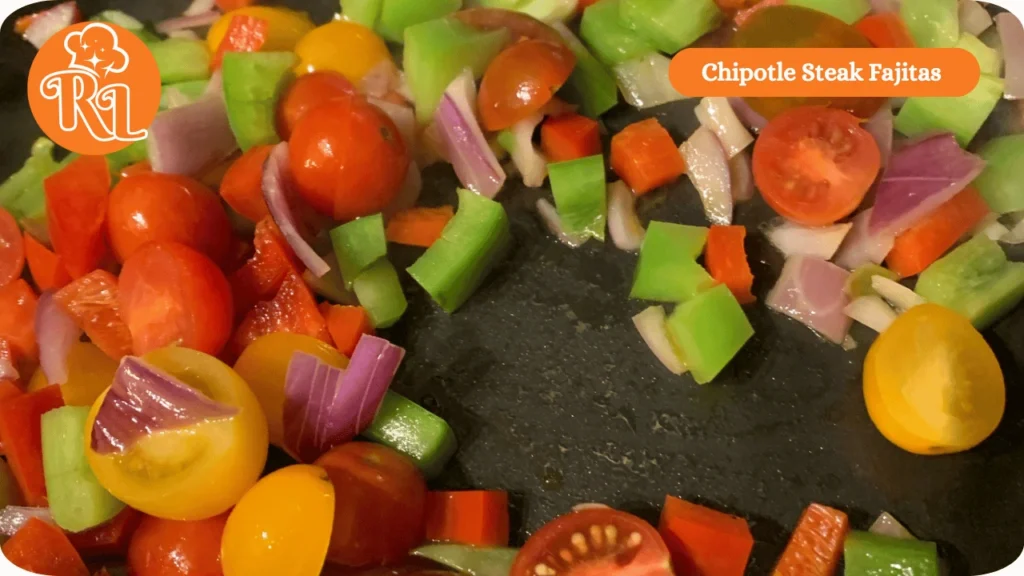
- Choosing the Right Vegetables: Use a mix of colorful bell peppers—red, green, yellow, and orange—for visual appeal and added flavor. Slicing them into thin strips ensures even cooking.
- Sautéing Techniques: Heat a skillet over medium-high heat and add a small amount of oil. Once hot, add the sliced bell peppers and onions. Stir frequently to prevent burning and ensure even cooking.
- Seasoning: Season the vegetables with salt, pepper, and additional spices like cumin or chili powder for an extra flavor boost. Sauté until they are tender but still retain some crunch.
- Combining Flavors: After the vegetables are cooked, you can add them directly to the skillet with the grilled steak, allowing the flavors to meld before serving.
Chipotle Steak Fajitas recipe
Equipment
- Grill or Grill Pan: Essential for cooking the marinated steak and achieving that perfect char and smoky flavor.
- Skillet or Frying Pan: Used for sautéing the bell peppers and onions until they are tender and slightly caramelized.
- Mixing Bowl: For preparing the marinade and mixing the steak with it.
- Measuring cups and spoons To accurately measure ingredients for the marinade and seasoning.
- Cutting board For slicing the steak, vegetables, and any additional toppings.
- Chef's Knife: A sharp knife for cutting the steak and chopping vegetables.
- Tongs: To easily flip the steak on the grill and toss the vegetables in the skillet.
- Serving Platter: For presenting the assembled fajitas or a variety of toppings for guests to choose from.
- Aluminum Foil (optional): To keep the tortillas warm or wrap the grilled steak to rest after cooking.
Ingredients
- For the Marinade:
- 1.5 lbs (680 g) of skirt steak or flank steak
- 2-3 tablespoons olive oil
- 3 tablespoons lime juice (about 2 limes)
- 2-3 chipotle peppers in adobo sauce (minced)
- 2-3 cloves garlic (minced)
- 1 teaspoon ground cumin
- 1 teaspoon smoked paprika
- 1 teaspoon salt
- ½ teaspoon black pepper
- For the Fajitas:
- 2 tablespoons olive oil (for sautéing)
- 1 large onion (sliced)
- 1 red bell pepper (sliced)
- 1 yellow bell pepper (sliced)
- 1 green bell pepper (sliced)
- For Serving:
- 8 small flour or corn tortillas
- Toppings (optional)
- Guacamole
- Sour cream
- Salsa
- Shredded cheese
- Fresh cilantro
- Lime wedges
Instructions
- 1. Marinate the Steak
- 1. Prepare the Marinade: In a mixing bowl, combine olive oil, lime juice, minced chipotle peppers, minced garlic, ground cumin, smoked paprika, salt, and black pepper. Whisk until well combined.
- 2. Marinate the Steak: Place the skirt or flank steak in a large resealable plastic bag or shallow dish. Pour the marinade over the steak, ensuring it's evenly coated. Seal the bag or cover the dish and refrigerate for at least 30 minutes, or up to overnight for maximum flavor.
- 2. Prepare the Vegetables
- Slice the Vegetables: While the steak is marinating, wash and slice the onion and bell peppers into thin strips. This will ensure they cook evenly and fit nicely in the tortillas.
- 3. Grill the Steak
- 1. Preheat the Grill: Preheat your grill or grill pan over high heat. If using a grill, make sure to oil the grates to prevent sticking.
- 2. Grill the Steak: Remove the steak from the marinade, allowing any excess to drip off. Place the steak on the hot grill and cook for about 4-5 minutes on each side for medium-rare, or until it reaches your desired doneness. Use a meat thermometer to check the internal temperature (130°F for medium-rare).
- 3. Let it Rest: Once cooked, remove the steak from the grill and let it rest for about 5-10 minutes. This helps the juices redistribute for a more flavorful bite.
- 4. Sauté the Vegetables
- 1. Heat the Skillet: In a large skillet, heat 2 tablespoons of olive oil over medium-high heat.
- 2. Sauté the Vegetables: Add the sliced onion and bell peppers to the skillet. Season with a pinch of salt and pepper. Sauté for about 5-7 minutes, stirring frequently, until the vegetables are tender and slightly caramelized.
- 5. Slice the Steak
- Slice the Steak: After resting, slice the steak against the grain into thin strips. This ensures tenderness with each bite.
- 6. Assemble the Fajitas
- 1. Warm the Tortillas: Warm the tortillas on the grill for a few seconds on each side, or in a microwave wrapped in a damp paper towel for about 20 seconds.
- 2. Layer the Ingredients: On each tortilla, place a few slices of grilled steak and a generous amount of sautéed vegetables.
- 3. Add Toppings: Top with your favorite garnishes such as guacamole, sour cream, salsa, shredded cheese, and fresh cilantro.
- 7. Serve
- Enjoy: Serve the assembled fajitas immediately with lime wedges on the side for squeezing over the top. Enjoy the delicious flavors of your homemade Chipotle Steak Fajitas!
Notes
Recipe Notes
- Marinating Time: For optimal flavor, allow the steak to marinate for at least 30 minutes. If you have more time, marinating for several hours or overnight will enhance the flavors even further.
- Steak Options: While skirt steak and flank steak are traditional choices for fajitas, you can also use ribeye, sirloin, or even chicken or shrimp as alternatives.
- Vegetable Variations: Feel free to experiment with different vegetables. Zucchini, mushrooms, or corn can be great additions or substitutions.
- Tortilla Choices: Both flour and corn tortillas work well. If you prefer a healthier option, consider using whole grain or low-carb tortillas.
- Toppings Customization: Personalize your fajitas with a variety of toppings such as diced tomatoes, jalapeños, pico de gallo, or shredded lettuce. This allows everyone to customize their fajitas according to their taste preferences.
- Storage: Leftover steak and vegetables can be stored in an airtight container in the refrigerator for up to 3 days. Reheat in a skillet or microwave before serving. Tortillas are best when fresh, so consider warming them just before serving.
- Serving Suggestions: Serve your fajitas with sides like Mexican rice, refried beans, or a fresh salad for a complete meal.
- Vegetarian Option: For a vegetarian version, replace the steak with grilled portobello mushrooms or marinated tofu, and keep the sautéed veggies for a hearty filling.
Assembling the Fajitas
The final step in creating the perfect chipotle steak fajitas is assembly. This is where you can get creative with various toppings and presentation styles:
- Warm the Tortillas: Before serving, warm the tortillas on the grill or in a skillet for a few seconds on each side. This enhances their flavor and makes them more pliable for wrapping.
- Layering: Start by placing a few strips of grilled steak on the tortilla, followed by sautéed vegetables. This creates a hearty base for your toppings.
- Toppings Galore: Offer a variety of toppings for guests to customize their fajitas. Consider options like guacamole, salsa, sour cream, cheese, and fresh cilantro.
- Presentation: Arrange the assembled fajitas on a serving platter, garnished with lime wedges and fresh herbs for a colorful and inviting presentation.
Fajita Variations and Customizations
One of the best aspects of fajitas is their versatility. While chipotle steak fajitas are delicious on their own, you can easily customize them to suit different tastes and dietary preferences:
- Protein Alternatives: Substitute steak with grilled chicken, shrimp, or even tofu for a vegetarian option. Each protein brings its unique flavor profile to the dish.
- Spice Levels: Adjust the spice level by incorporating more chipotle peppers, jalapeños, or using a spicy salsa as a topping.
- Vegetable Medley: Experiment with additional vegetables, such as zucchini, mushrooms, or corn, to enhance the texture and flavor of your fajitas.
- Tortilla Options: Offer different types of tortillas, such as corn, flour, whole wheat, or gluten-free varieties, to cater to guests’ dietary needs.
- Serving Style: Instead of assembling individual fajitas, consider serving the ingredients as a fajita bar, allowing guests to create their custom tacos and burritos.
Pairing Suggestions
To elevate your fajita experience, consider pairing your chipotle steak fajitas with complementary side dishes and beverages:
- Side Dishes: Classic sides include Mexican rice, black beans, or a fresh garden salad. These dishes enhance the meal while providing additional flavors and textures.
- Beverage Pairings: For beverages, consider serving iced tea, margaritas, or Mexican beers. These drinks complement the flavors of the fajitas and create a festive atmosphere.
- Desserts: End the meal with light desserts like churros, flan, or tres leches cake for a sweet finish that balances the savory flavors of the main dish.
Here’s a detailed nutritional value table for Chipotle Steak Fajitas per serving (approximately 2 fajitas):
| Nutrient | Amount per Serving (2 Fajitas) |
|---|---|
| Calories | 500-600 |
| Total Fat | 25-30 g |
| Saturated Fat | 8-10 g |
| Cholesterol | 70-90 mg |
| Sodium | 800-1000 mg |
| Total Carbohydrates | 40-50 g |
| Dietary Fiber | 5-7 g |
| Sugars | 2-4 g |
| Protein | 30-35 g |
| Vitamin A | 15% DV |
| Vitamin C | 25% DV |
| Calcium | 8% DV |
| Iron | 15% DV |
Conclusion
Chipotle steak fajitas are more than just a meal; they are a celebration of flavor, color, and culinary creativity. With their origins rooted in Tex-Mex cuisine, these fajitas have become a beloved dish around the world, allowing for endless adaptations and variations. By mastering the art of marinating steak, sautéing vegetables, and assembling a vibrant plate, you can create an unforgettable dining experience that brings family and friends together.
Whether you are hosting a casual gathering or a festive celebration, chipotle steak fajitas are sure to impress and satisfy. With the right ingredients, preparation techniques, and a little creativity, you can elevate this classic dish into a gourmet experience that everyone will enjoy. So gather your ingredients, fire up the grill, and get ready to enjoy the flavorful world of chipotle steak fajitas!

